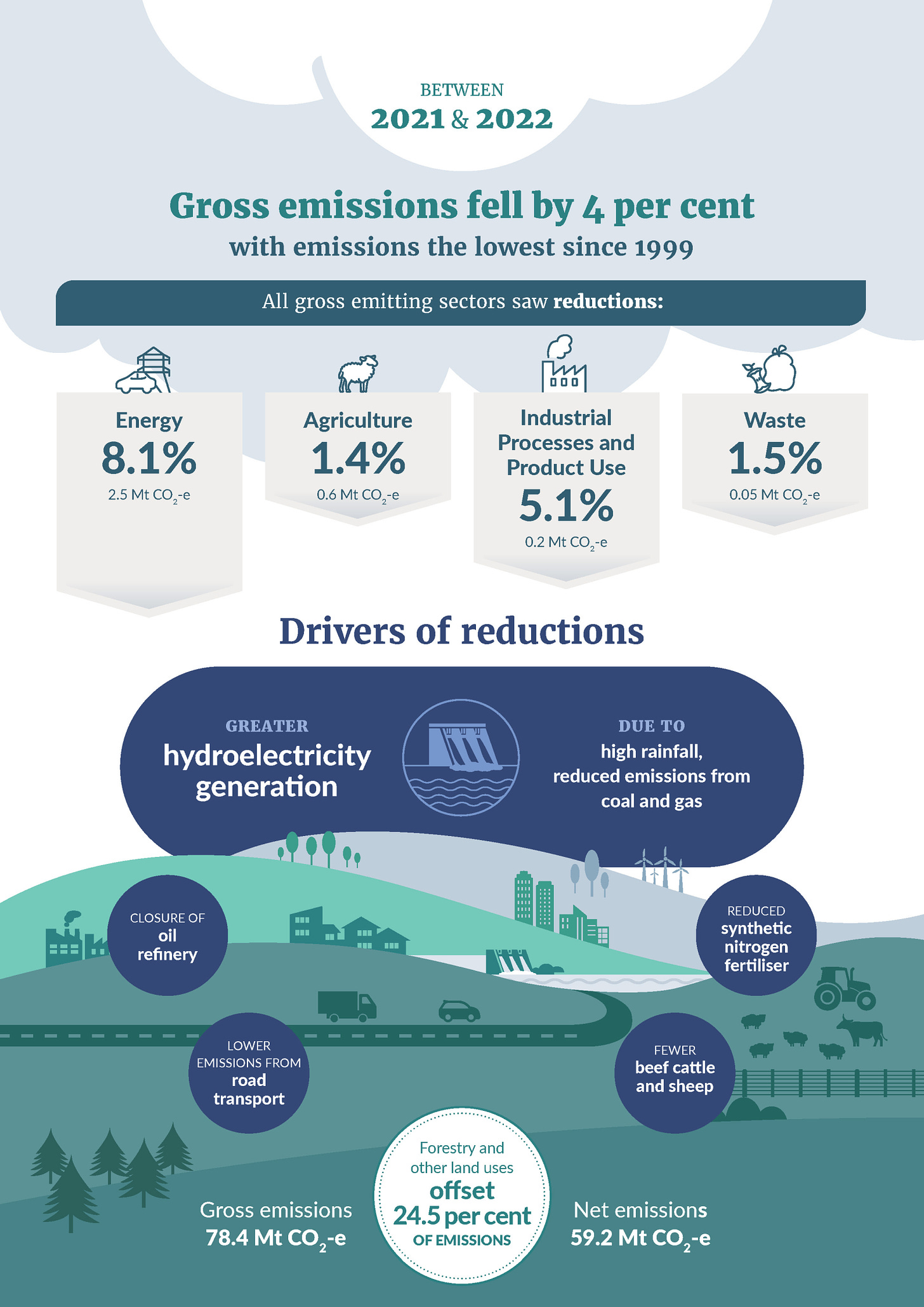20,000 more on jobseeker benefits than this time last year
The government's plan to get 50,000 people off jobseeker support by 2030 has had a rocky start.
Mōrena, and welcome to The Bulletin for Friday, April 19.
In today’s edition: Forecaster predicts economy to struggle for another 12 months; NZ greenhouse gases continuing to drop; review of rules for earthquake-prone buildings to be brought forward. But first, as unemployment and the cost of living both increase, so too do beneficiary claims. But the government has a plan, and it involves sanctions.
Beneficiary numbers are up – and so are sanctions
There are around 20,000 more New Zealanders receiving jobseeker support than this time last year, an 11.6% increase. Overall, main benefit recipients rose by 24,834, or 7.2%, in the year to March. The figures are included in the Ministry of Social Development (MSD)’s latest quarterly benefit fact sheet, which helps paint a picture of how the rapidly tightening labour market is affecting benefit claims.
Getting 50,000 people off jobseeker benefits by 2030 is one of the government’s recently released targets, and social development minister Louise Upston says it will start by ramping up sanctions from June. This week’s report finds the number of beneficiaries sanctioned in March quarter is already 20% higher than a year ago. Upston says she’s pleased that MSD seems to be taking the initiative on its own. "While we would rather see beneficiaries with work obligations comply with these to avoid being sanctioned, it’s good to see MSD utilising all the tools at its disposal to incentivise people into work.”
Fact-checking the government’s ‘24 years on a benefit’ claim
A stat quoted by both Upston and PM Christopher Luxon came under scrutiny this week after the Greens accused the government of using it to mislead the public. The claim that teenagers on a youth payment will spend an average of 24 years of their working lives on a benefit is true, finds the NZ Herald’s Thomas Coughlan (paywalled) – but it applies to just 0.5% of people who receive main benefits. “To use that tiny percentage of beneficiaries to paint a picture of a whole group of people – we’re talking about hundreds of thousands of people who at some point would have relied on income support – is unfair,” says the Greens’ Ricardo Menéndez March. Be that as it may, the overall number of long term beneficiaries is increasing. According to a report on beneficiary trends commissioned by MSD, a “work-ready jobseeker in 2019 was expected to spend an average of 10.8 years of their working lives on Jobseeker. By 2022, that figure had increased to 13 years,” writes Coughlan.
Job cuts may complicate Willis’s social investment plans
Running in tandem with efforts to get people off state benefits is the government’s big plans for social investment. A core philosophy of former National leader Bill English, the data-driven social investment approach involves spending money now to save money later – a tough ask in the midst of all-of-government belt-tightening. Speaking to BusinessDesk’s Greg Hurrell (paywalled), social investment minister Nicola Willis says the plan is to “eat the elephant one bite at a time, which is to say pick some specific things we can demonstrate over the longer run”. Public sector cuts may make her vision harder to achieve, however. Oranga Tamariki has just announced big job cuts, including “perhaps a third of roles at its evidence centre changing or being disestablished”, writes Hurrell. “The evidence centre provides analytics and insights on clients, their families, and the work of Oranga Tamariki, just the type of research and data that successful social investment would depend on.”
NZ falling dangerously behind on aged care, report warns
Another area of concern for the government is aged care, the subject of a report by Health New Zealand Te Whatu Ora which highlights how the country will struggle to service an aging population in the coming decades. The construction of aged care facilities isn’t keeping up with demand, the report says. “Its analysis found if historic building rates continued, there could be a shortage of almost 12,000 aged residential care beds by 2032,” RNZ reports. Residents of different regions can receive dramatically different levels of service. “For example, waiting times for high priority individuals being admitted to an aged residential care facility ranged from 92 days in MidCentral (Manawatū area) to 219 days on the West Coast.” There’s a particular lack of beds for high-needs dementia and psychogeriatric patients, with these people waiting on average six months to move out of a home setting – a highly challenging situation for patients and carers alike.
Right now, we need your support more than ever
The Spinoff recently estimated that the number of full-time journalists in New Zealand may have halved since 2018 Census data was published. As the media landscape continues to change, numbers continue to decrease. The Spinoff is not immune to the drastic advertising slowdown impacting the sector. That’s why we’re immensely grateful to our audience for their support. To those who already support us, thank you. If you don’t and are able, we’d be very grateful if you’d consider becoming a Spinoff member or donating today.
Duncan Greive
Founder
Economy to struggle for another 12 months – forecast
The New Zealand economy will be in the doldrums for another year, predicts Infometrics. The economic consultancy has released a new forecast that picks GDP and private consumption spending to fall in the middle of 2024, and slower growth than previous expected in the second half of the year, Stuff’s Susan Edmunds reports. The picture looks even worse when the immigration influx is taken into account, Infometrics chief forecaster Gareth Kiernan said. Excluding the lockdown period of 2020, household spending recorded its largest decline per person since 1992. The economy is being “hit harder than expected” with mortgage rates of over 7% and… little sign from the Reserve Bank of any relief this year,” he said. “Infometrics forecasts that inflation will be back below 3% by early 2025, enabling the Reserve Bank to start cutting the official cash rate from November this year, from 5.5% to a neutral rate of 4% by the end of 2025,” Edmunds reports.
NZ greenhouse gases continuing to drop
And now for some good news. For the third year in a row New Zealand has cut its production of climate-heating gases, emitting the least amount since 1999, The Post’s Luke Malpass reports. A drop in the amount of coal and gas used to make electricity was the key driver, helped by plenty of rain in the country's hydro dams. The other big contributor to the decrease, according to the report, was the closure of the Marsden Point refinery, while a decrease in sheep and beef cattle numbers and less nitrogen fertiliser use contributed to a 1.4% drop in agricultural emissions. The figures, published in the environment ministry’s latest Greenhouse Gas Inventory, are gross NZ emissions, before the deduction of emissions removed “by forests and other land uses”. While the numbers are moving in the right direction, Green MP James Shaw tells RNZ it’s important to remember that Huntly power station will need to ramp up its coal use again if NZ has another dry year.
The week the economic mood shifted
Kiwibank chief economist Jarrod Kerr joins Bernard Hickey in this week’s episode of When the Facts Change to discuss and dissect the trajectory of inflation and interest rates, both here in Aotearoa and around the globe. Inflation is stickier than expected and interest rates are likely to stay higher for longer, but what does that mean for the kiwi dollar? How do US Fed chair Jerome Powell's recent comments affect us? And what is going on with the price of gold?
Click and Collect
The government is bringing forward a review of rules for earthquake-prone buildings, extending remediation deadlines by four years, and ending a loan scheme that helped owners pay for repairs.
Tauranga’s government-appointed commissioners say they should stay on past July, but the minister says the city will be getting a mayor.
Meanwhile, Olympian Mahé Drysdale might be standing for Tauranga council.
Te Papa’s controversial Te Tiriti display is coming down next week.
A vegan chocolate has been named supreme champion at NZ’s outstanding food producer awards.
A new Tory sleaze scandal had dropped – and it’s a wild one.
Feeling clever? Click here to play 1Q, Aotearoa’s newest, shortest daily quiz.
Zoë Mills ranks all of the Raglan Roast cafes in Wellington from worst to best. Stewart Sowman-Lund reports on the Auckland University students threatening a rent strike over rising accommodation fees. Madeleine Ballard reviews new book when i open the shop by romesh dissanayake. Checkered Flag directer Natalie Wilson confesses that she's an unlikely petrolhead, but adores cars anyway. An anonymous writer describes what it's like to be made redundant by the Ministry of Education. Hera Lindsay Bird advises a reader whose parents won't hang out with her kids.
Sporting snippet
NZ’s America’s Cup challenger boat has been christened Taihoro, a name inspired by the concept of Taihoro-Nukurangi, capturing “the dynamic essence of the sea (tai), the concept of speed (horo), the earth’s movement (nuku), and the expanse of the sky (rangi)”.
The Bulletin is looking for a sponsor
Expertly curated, The Bulletin delivers essential news and diverse perspectives from Aotearoa and beyond to business leaders, politicians, and decision-makers nationwide. Contact commercial@thespinoff.co.nz to learn more.
Got some feedback about The Bulletin, or anything in the news? Get in touch with me at thebulletin@thespinoff.co.nz.
If you liked what you read today, share The Bulletin with friends, family and colleagues.












